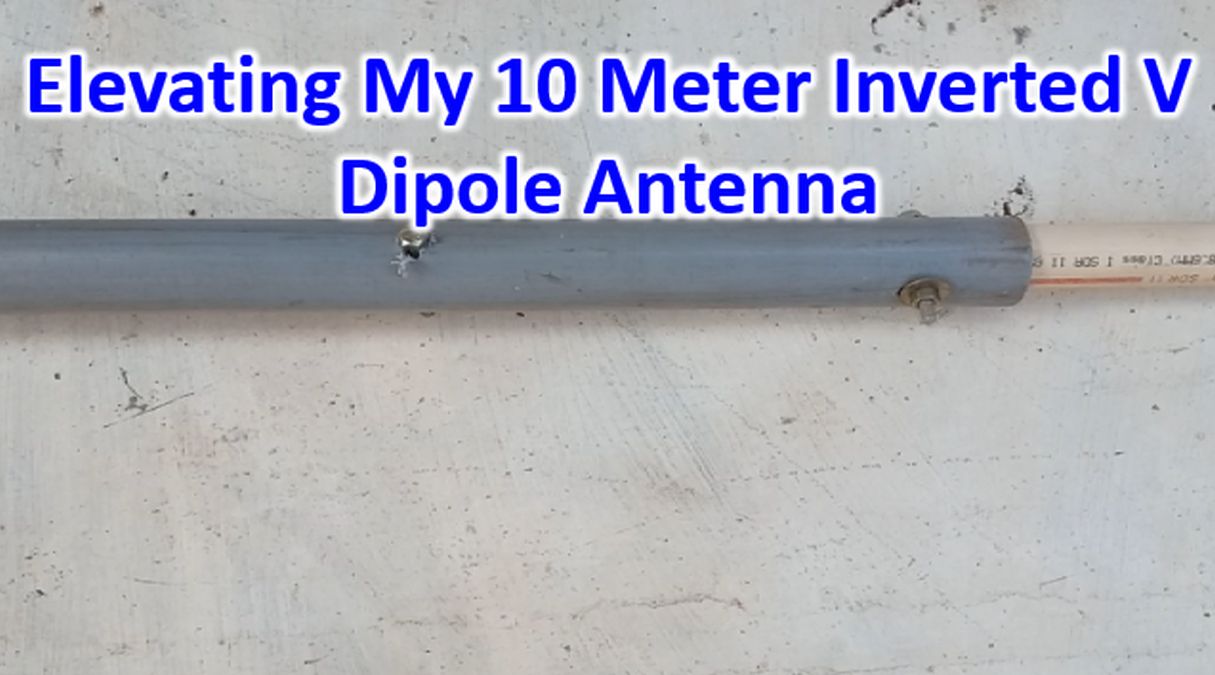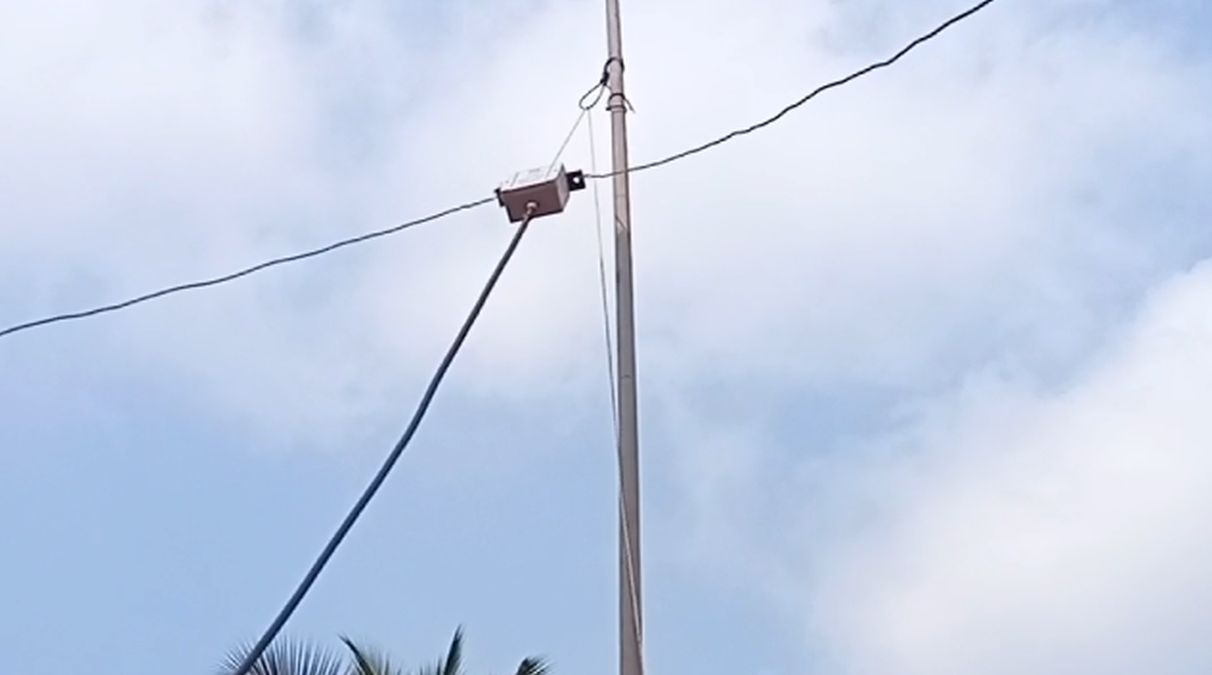Elevating My 10 Meter Inverted V Dipole Antenna
My inverted V dipole antenna for 10 m has been performing fairly well. As it was only 4 m above the balcony, some of my friends suggest elevating it by using an additional CPVC pipe of higher dimension, in a telescopic fashion. I was using a CPVC mast and tried to add 3 m length of PVC pipe of 40 mm diameter over the existing 2.5 mm diameter pipe. Higher dimension CPVC pipe was not available in the local hardware shop. Drilled a couple of holes and bolted the two pipes together with an overlap region of around 50 cm. Kept it vertical and tried to pull up the 1:1 balun at the feedpoint of 10 m antenna using a pulley like mechanism made of nylon rope. But it would not go up much beyond the level of the 40 mm PVC pipe. The upper CPVC pipe would bend and the balun could not be raised to the full height.

In despair, I brought down the assembly and it even fell on my end fed antenna in the process. At one look I could not find any damage to the end fed antenna, though I will be able to say exactly only tomorrow morning when I test it out with my friends on 40 m. I had the 22 feet GI pipe lying there on the terrace and thought of using it as a mast instead. It could be done rather fast as it already had a wire ring near the top which was used like a pulley for my end fed antenna earlier. As the GI mast was much more stable, I could pull up the 1:1 balun nearly to the top, leaving about 1 foot. Then I fixed the ends of the antenna elements to two other masts at about 7 feet height. In the video clip, antenna appears to be in the sky, because imaging was done from just below the mast!

On testing the VSWR, I found that frequency of lowest SWR had shifted up to the FM region of the 10 m band. At lower end of the band it was 3.0, while it was 1.1 at 29.3 MHz and 29.5 MHz. Thinking that the shift had occurred mainly because of narrowing of the apex angle because of elevation of the mouting point, I elevated the ends of the antenna elements by about 50 cm and rechecked VSWR. It had come down to 2.5 at the lower end of the band and 1.0 in the FM region.
I did not try further elevation of ends of antenna elements or tuning by changing length of elements as I am planning to add a set of 6 m elements later, as a fan dipole, which would need retuning again. Moreover, the values were within the limits at which the built-in antenna tuner of my radio could handle. Soon after stopping work, I could hear a DX station 5,9+ on 10 m. But there was no point in calling him back as he was looking for VK, ZL and beaming to Pacific and North America. I am continuing to monitor 10 m band waterfall in my radio to get a suitable station. You may note that the basic noise level is only S3 on 10 m and the signal is 5,9+ with good signal to noise ratio. On other bands I usually get S9 noise level in this region so that signal to noise ratio is very poor. That is why I am happy to listen to 10 m band.
After some time I could hear an Italian station and a station from Israel, which I have not heard earlier. So I felt that reception has improved after elevating the 10 m inverted V dipole. Later I could contact 9M2ART on 10 m, a new country for me and thus giving me a hint that elevating the 10 m antenna has been really useful.